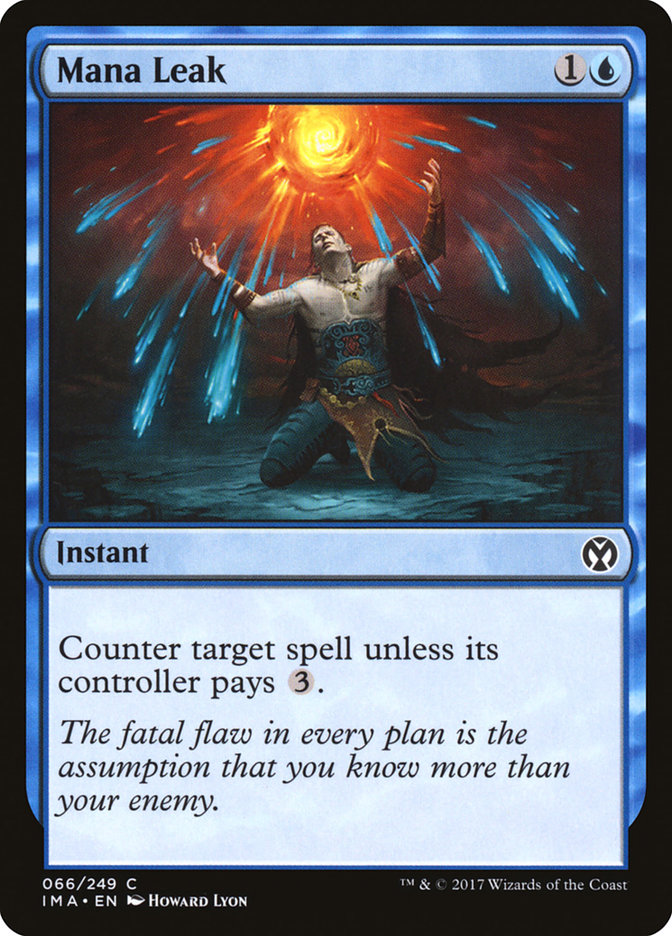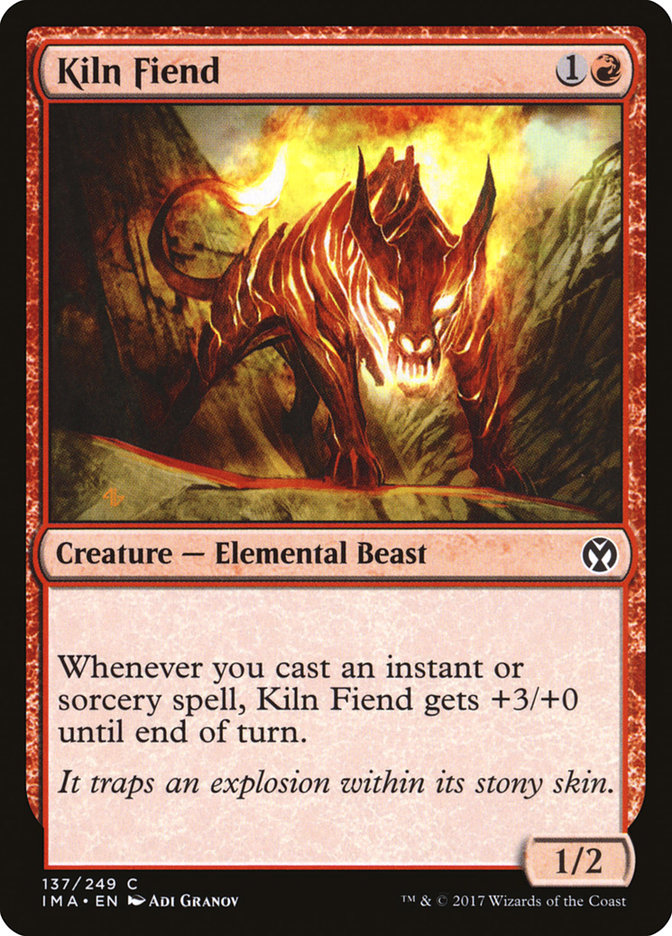Iconic Masters is almost here! Last week I hopped on stream with @LordTupperware in order to do a set review for IMA, which you can check out here on his YouTube channel. One of the best ways to prepare for a Limited format is to review the cards yourself, so I have an idea what to expect now.
My initial speculation is that normal aggressive decks will not be good. I mentioned in my last article that there were three two-mana mana rocks at common. Well, there are actually four. This is huge. It won’t be uncommon for ten mana rocks to be in any given draft (especially since there are more at uncommon), making it much harder to slide under late-game decks. Also, don’t forget that lifegain is an archetype, which could spew a variety of decks hostile to your average aggro deck.
This doesn’t mean you can’t draft aggressive decks, but it does mean you may need to be meticulous when drafting. Battle-Rattle Shaman is likely too clunky, and even Borderland Marauder may just be too plain. Don’t get me wrong, you’ll still probably play Borderland Marauders, but I’m going to go out on a limb and say that the specific texture of these decks won’t require the card.
So what is the “texture” of aggressive decks that can exist in Iconic Masters?
Answer: Blue Tempo
Honestly, I’m unsure how aggressively oriented these tempo decks will be, but I do know that, given the collection of cards in the set, these decks can kill quickly and disrupt well. In fact, my uncertainty towards the speed of these decks may be a hint towards their staying power. It may just mean that blue, as a tempo-oriented color, can facilitate both aggression and late-game. And if there is a proper marriage here that can present itself in one deck, that could easily be the boogeyman of the format.
One thing to look at is that Distortion Strike was bumped up to uncommon. This could be because the card doesn’t create fun play patterns, or conversely because it was too good to exist at common given the abundance of prowess creatures and cards like Kiln Fiend. I’m going to start taking this card highly, as it may be one of the most important pieces for getting these tempo decks to play well in the late-game. And hey, Limited is still combat-oriented, so it’s possible other blue decks will want it as well.
Mana Leak may be the best common in this format. Originally I thought mana rocks were going to be the best, but given how many should be in any given draft, I no longer think you’ll need to prioritize them so highly (reasonable chance I’m wrong here, though). Mana Leak is the perfect bridge from tempo to control. Getting ahead on the battlefield and then holding up countermagic is a great way to win the game. And it’s going to be a great card in any blue deck to boot.
In Masters formats, removal tends to not be as important, as creatures tend to generate value. But countermagic is a solid way to provide one-for-one answers. Of note, the abundance of mana rocks does make Mana Leak worse, but I don’t think it’s by a substantial margin.
Overall, you’re going to need to plan for the late-game for your aggressive decks, and I feel the tempo decks are best-suited for this. So let’s take a look at the different blue tempo archetypes!
U/W
The texture of this deck is going to depend which color is there for support. The more white creatures you have, the lower to the ground you could make this deck. It’s unclear if the better versions of U/W will lean more towards Infantry Veteran and curving out with the support of cards like Ojutai’s Breath and Emerged Unscathed, or if the better versions will max out on prowess-like cards such as Elusive Spellfist and Jhessian Thief.
I will start drafting this deck as a meld of the approaches above, as they exist on a similar axis. I’ll prioritize the best cards available at common, such as Mana Leak and Seeker of the Way, and keep the way clear using tempo and finish off the late-game with evasion. I do not expect this to be a fliers deck, though, as the fliers just seem not aggressive enough. I’m pretty low on the card Phantom Monster in Masters sets, and while it’ll be a fine card, I expect the best versions of U/W to have it in the sideboard.
U/R
I expect this deck to have two distinct versions. Unlike U/W, the two styles of U/R don’t appear to be on the same axis. There is an aggressive tempo deck and there will be a straight-up control deck. So when drafting this archetype, prioritizing the cards that go into both, such as Mana Leak — surprise, surprise! — and Draconic Roar will be the best way to approach this deck. It’s entirely possible cards like Kiln Fiend and Distortion Strike are substantially more important to the tempo deck than both Mana Leak and Draconic Roar, but flexibility is invaluable.
You can see that the tempo version of this deck appears to be close to the U/W tempo deck. I’m going to guess that the U/R version is a bit more all-in. This is mostly because white provides a larger density of solid creatures than red. While both decks require a lot of similar pieces, I expect U/R to have a higher spell density to support Kiln Fiend and hence have a higher ceiling regarding performance, but also a lower floor. Figuring out the proper way to draft U/R will be key because it has a nonzero chance of losing to one removal spell on Kiln Fiend if drafted improperly.
U/B
What? U/B can be a tempo deck? Well, I’m not entirely sure, but I’m hoping it can. This archetype is supposedly a balance between midrange and control connected by a mill subtheme. I have no idea if this can support a tempo deck, but I was thinking, what if mill wasn’t the end-game? What if the real key to using Jace’s Phantasm is in a tempo deck? Now, this may not work, but it’s interesting to think about.
With two commons in Jace’s Phantasm and Wight of Precinct Six that pretty much nobody else at the table will want, it’s not unrealistic to get both in multiples. If we pair these cards with some general tempo and incidental mill cards like Grisly Spectacle or even Thought Scour, maybe it’s the real deal. I’m skeptical, but not ruling it out!
As far as the last blue archetype, I don’t think U/G could come together as a tempo deck because there just isn’t a density of cards that green supplies to help there. It’s likely too hard to build a deck around attacking in an archetype dedicated to defenders and ramp.
I’m excited to get my hands on this set, and next week you’ll get to see some actual drafts! But for now, what would you like me to delve into for my next article right before the release? Any cards you’re having trouble evaluating? Archetypes you don’t understand? Inquire in the comments!













